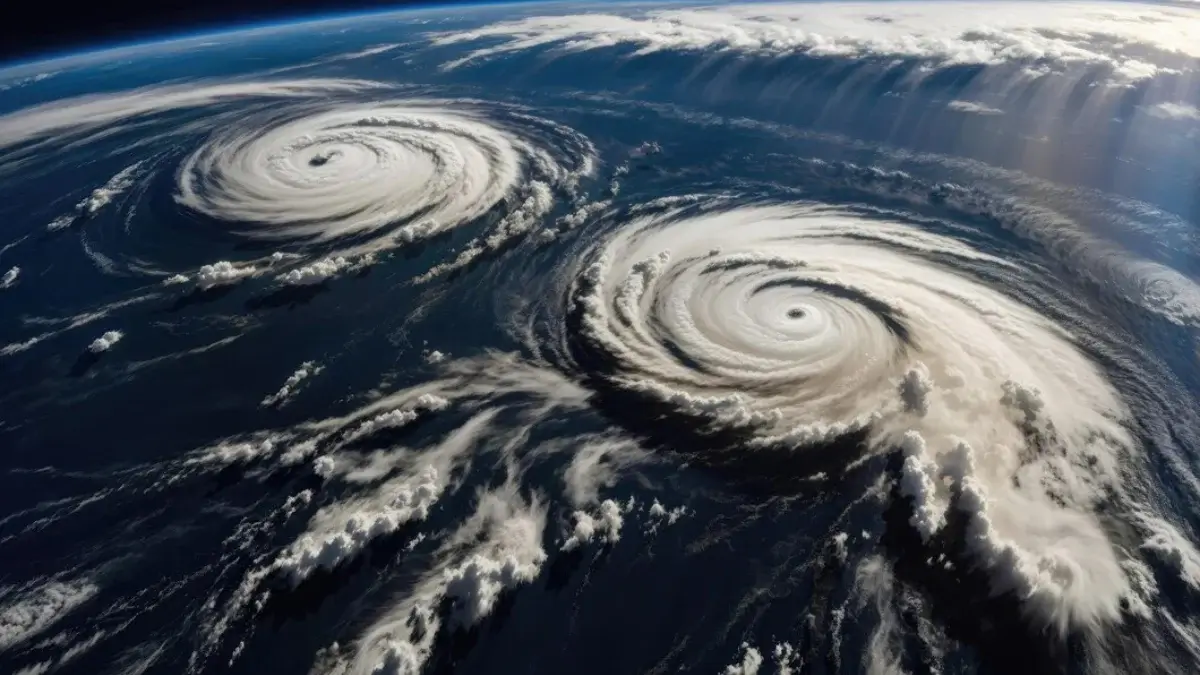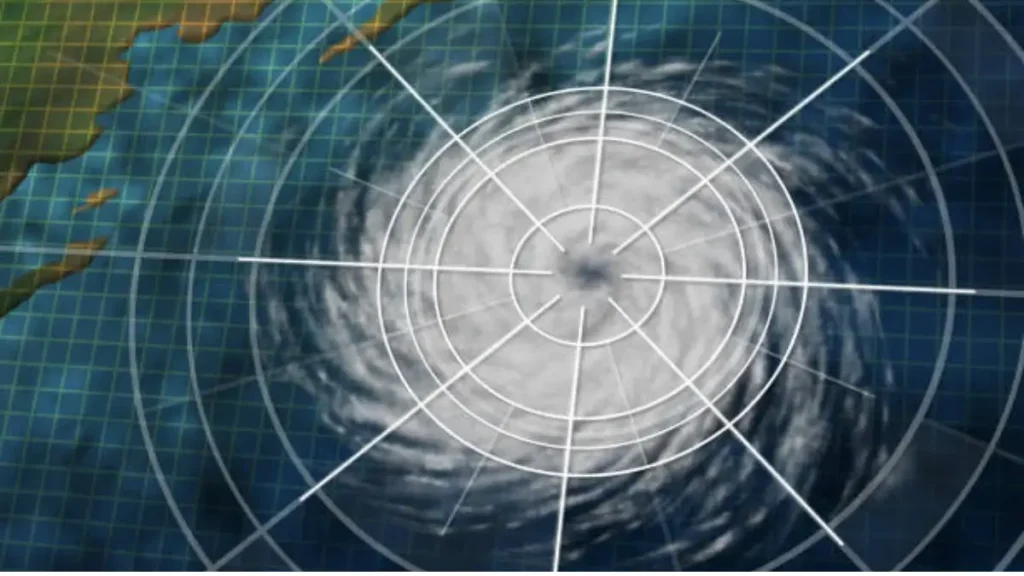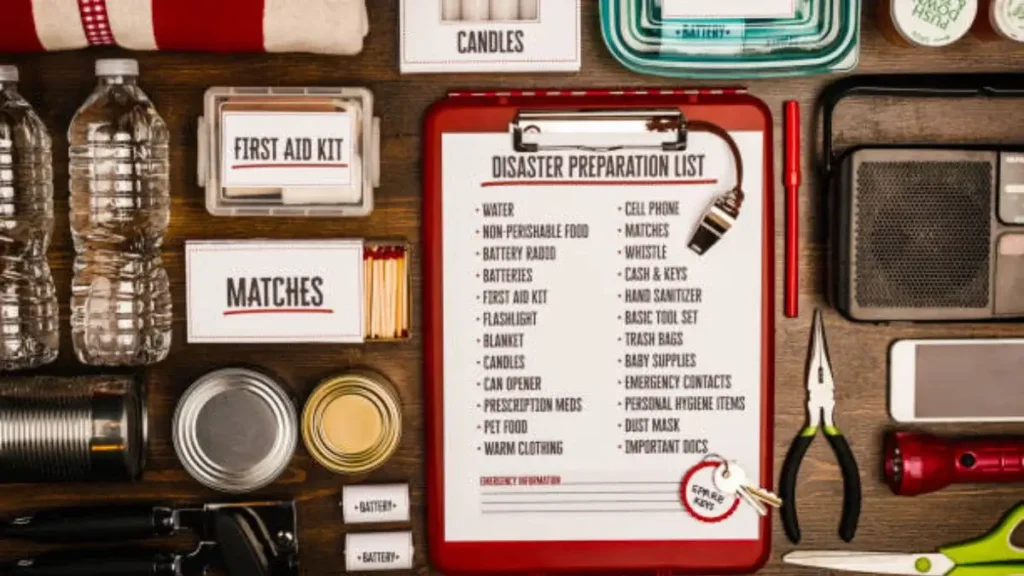GENERAL
How Climate Patterns Influence Hurricane Formation

Climate patterns significantly impact hurricane formation. Factors like warm ocean temperatures, low wind shear, and moisture are crucial. Climate change intensifies these patterns, potentially leading to more robust and frequent hurricanes. Understanding these influences aids in better prediction and preparation for hurricane seasons.
Table of Contents
What Are Hurricanes?
Hurricanes are strong tropical storms that can destroy large areas of land. Understanding how do hurricanes form can help communities better prepare for and mitigate their impacts. These robust systems, typified by strong winds, torrential rain, and storm surges, originate over warm ocean waters. When a hurricane strikes, it can devastate infrastructure, disrupt lives, and cause significant economic loss. The complex interactions of oceanic and atmospheric conditions are critical to forming these potent natural events.

Despite their destructive nature, hurricanes distribute heat and energy across the globe, which can affect weather patterns far beyond the storm’s immediate vicinity. These storms balance the Earth’s energy by moving warm air from the tropics toward the poles. The history and mechanisms behind these formidable weather systems remain a focus of ongoing research and scientific inquiry, pushing the boundaries of our understanding ever further.
The Science of Hurricane Formation
To thoroughly understand the mechanics of storm creation, it’s essential to comprehend the several factors contributing to hurricane development. For a hurricane to form, several conditions must be met: warm sea surface temperatures of at least 26.5°C, high humidity, and a light to moderate wind shear. These conditions facilitate the rise of warm, moist air from the ocean surface, creating a low-pressure area. When these factors align, they make the perfect environment for a cluster of thunderstorms to organize and intensify, transforming into a hurricane.
Additionally, hurricanes often start as tropical disturbances, which can strengthen into tropical depressions and subsequently into tropical storms. If conditions remain favorable, these tropical storms can develop into hurricanes, marked by sustained wind speeds of at least 74 mph. Due to the Earth’s rotation, the Coriolis effect helps spin the system and organize the storm into a cohesive structure. Meteorologists monitor these stages closely using satellites and radar to forecast potential hurricane paths and intensities.
The Role of Climate Patterns
Climate patterns have a notable influence on hurricane formation and behavior. Ocean currents, trade winds, and atmospheric pressures can enhance or inhibit hurricane development. For instance, warm ocean currents can provide heat and moisture, fueling a hurricane’s growth. This is particularly evident in regions like the Gulf of Mexico, where warm waters often lead to rapid intensification of tropical storms.

Conversely, high wind shear—strong, varying winds at different altitudes—can disrupt a hurricane’s structure, weakening it or preventing its formation altogether. Wind shear disrupts a hurricane’s vertical structure, preventing it from maintaining the organized, cyclonic motion needed for strength. Understanding these dynamics is essential for predicting hurricanes’ occurrence and potential impact. Researchers use climate models to simulate these interactions and improve forecast accuracy.
Impact on Coastal Regions
Coastal regions are particularly vulnerable to hurricane impacts. These areas often experience severe damage from high winds, storm surges, and flooding. According to a CNN report, many coastal cities increasingly focus on enhancing their resilience and preparedness for natural disasters. The immediate effects can be catastrophic, affecting homes, businesses, and critical infrastructure.
In addition to the immediate physical damage, hurricanes can have long-term economic impacts on coastal communities. The cost of rebuilding infrastructure, loss of tourism revenue, and disruption to local economies can be significant, underscoring the need for effective mitigation strategies. Communities are adopting various methods, such as building seawalls, improving drainage systems, and enforcing stricter building codes to withstand hurricane forces better. These measures and enhanced emergency response plans aim to reduce hurricanes’ human and economic toll on vulnerable regions.
Climate Change and Future Hurricanes
There is increasing concern about how climate change might influence future hurricane patterns. Warmer ocean temperatures and rising sea levels are expected to create a more conducive environment for hurricane development. This could lead to more frequent, intense storms in the coming decades. Scientists predict that while the number of hurricanes might not significantly increase, the proportion of high-intensity storms—categories 4 and 5—will likely rise.
Researchers are actively studying these trends to provide better forecasting and risk assessments. The objective is to develop comprehensive models that can predict hurricane activity more accurately and inform planning and response strategies for affected regions. By understanding the connections between climate change and hurricane behavior, policymakers and planners can devise long-term strategies to protect communities. These strategies include updating building codes to withstand stronger storms, investing in natural barriers like mangroves and wetlands, and improving early warning systems.
Mitigation and Preparation
Effective mitigation and preparation are crucial to reducing the impact of hurricanes. Improved forecasting techniques and early warning systems can help communities prepare in advance. Advances in meteorology, such as using satellites and computer models, have significantly improved our ability to predict hurricane paths and intensities.

Furthermore, robust building codes and infrastructure improvements can enhance resilience to hurricane-force winds and flooding. Coastal regions might implement stricter zoning laws to limit development in high-risk areas and invest in infrastructure projects to withstand extreme weather. Community preparedness programs, including evacuation plans and public awareness campaigns, are also crucial. These initiatives ensure that residents know how to respond during a hurricane, potentially saving lives and reducing injuries. Education and drills can help communities develop a culture of preparedness, making them more resilient in the face of natural disasters.
Conclusion
Understanding how climate patterns influence hurricane formation is essential for effective preparedness and mitigation. By studying these natural phenomena and enhancing forecasting techniques, communities can better anticipate and respond to hurricanes. Investing in resilient infrastructure and preparedness programs can significantly reduce the devastation caused by these powerful storms. Integrating this knowledge into planning and response efforts will be crucial as our understanding of climate science advances. The goal is to create communities that can withstand and quickly recover from hurricane impacts, safeguarding lives and sustaining economic stability.
-

 GENERAL2 months ago
GENERAL2 months agoUncovering the World of кинокрадко: The Dark Side of Film Piracy
-

 GENERAL1 month ago
GENERAL1 month agoUnveiling the Art of преводсч: How Translators Bridge Language Barriers
-

 YOGA1 year ago
YOGA1 year ago4 Person Yoga Poses for Beginners
-

 GENERAL3 weeks ago
GENERAL3 weeks agoChristofle – For Those Who Dream of Family Heirloom Silver


























